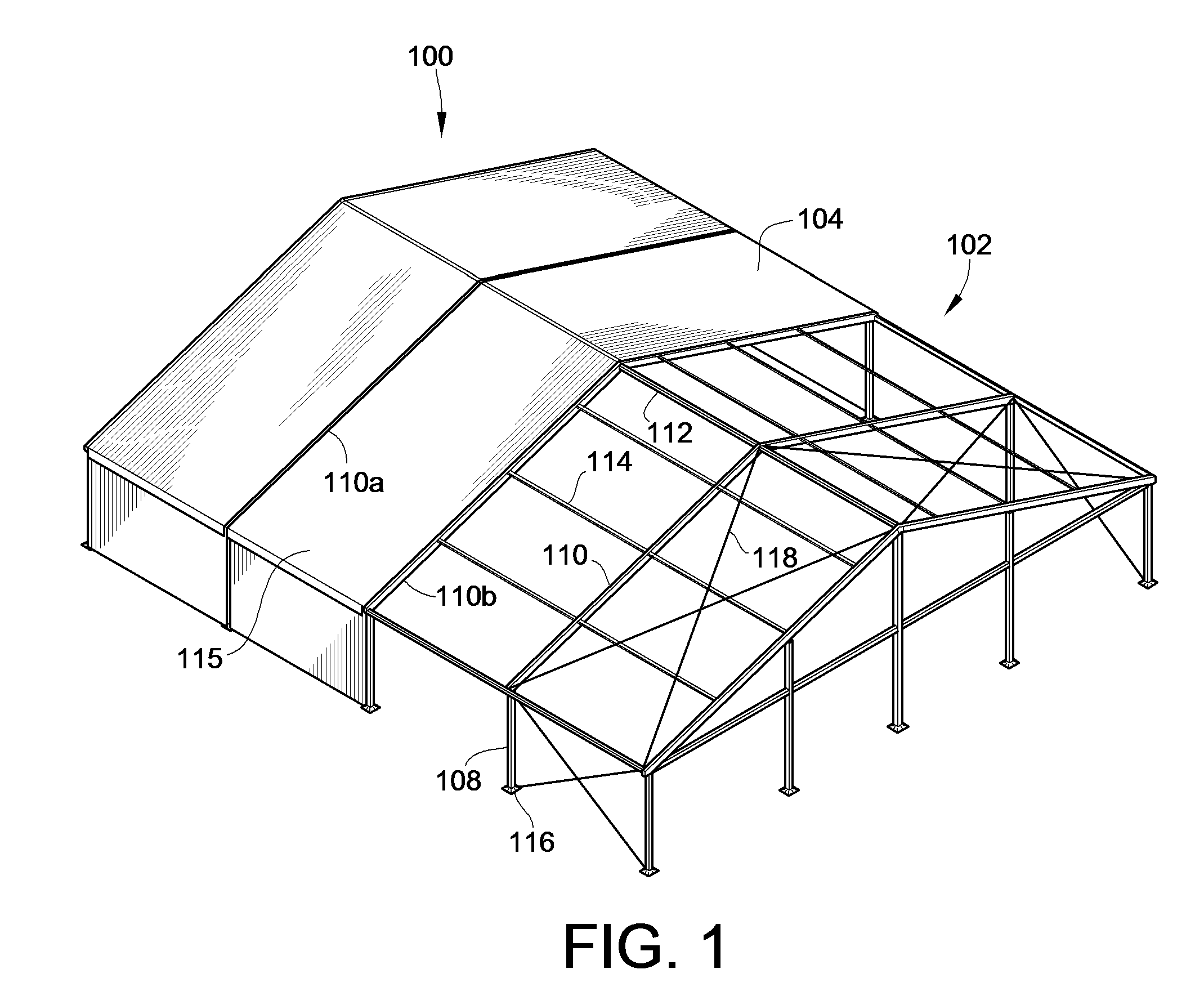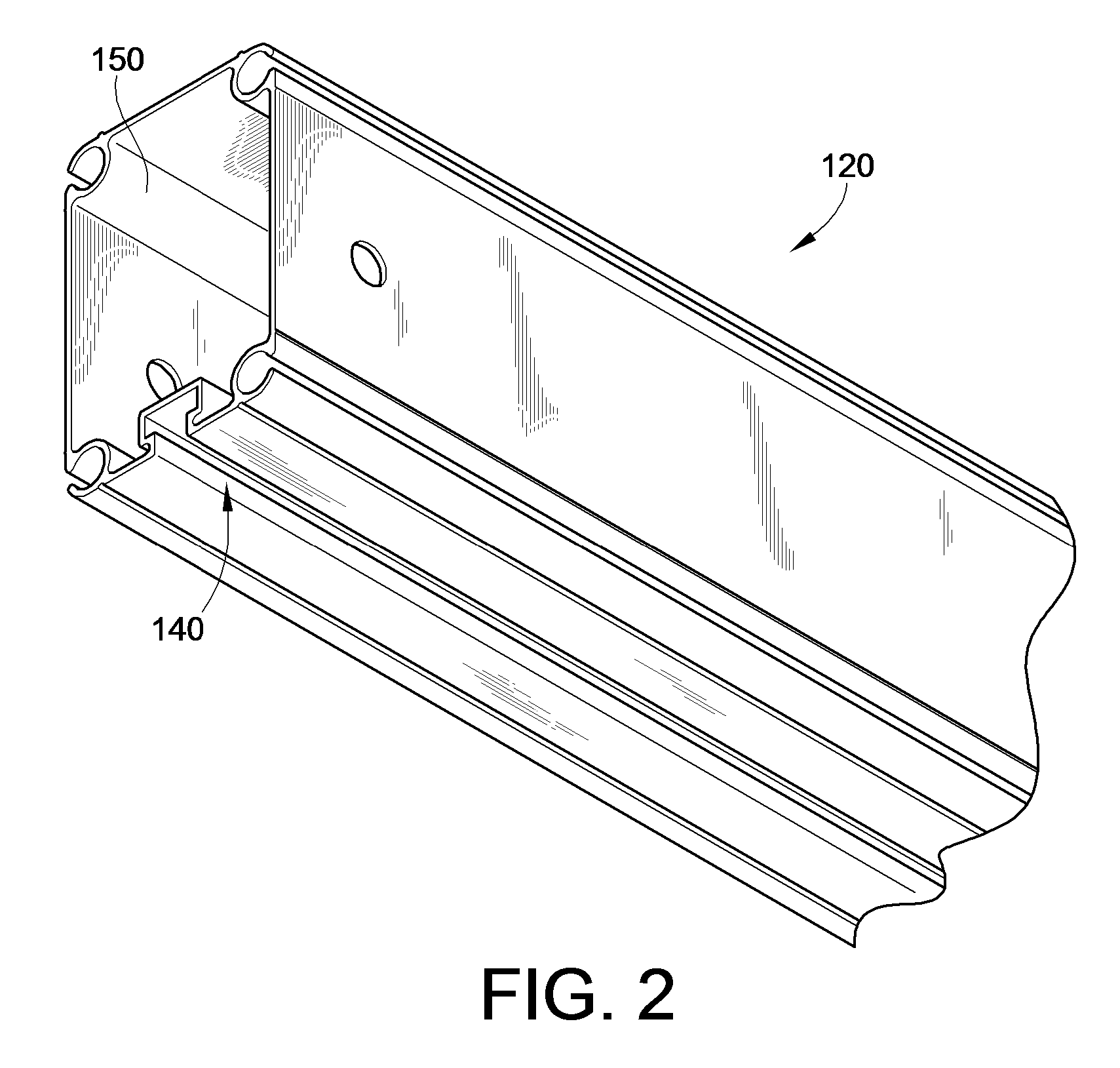Tent rafter end cap and tent incorporating same
a technology of tent frame and end cap, which is applied in the field of tents, can solve the problems of uneven bottom surfaces, and achieve the effect of reducing or avoiding the damage of fabric panels due to blemishes in structural members
- Summary
- Abstract
- Description
- Claims
- Application Information
AI Technical Summary
Benefits of technology
Problems solved by technology
Method used
Image
Examples
Embodiment Construction
[0032]FIG. 1 illustrates a partial illustration of a typical tent 100 including structural members in accordance with the teachings of the present invention. The tent 100 includes a tent frame 102 that supports a shell 104 to provide a shelter or building like structure.
[0033]The tent frame 102 is generally constructed of a plurality of structural members including a plurality of legs 108 that generally define the vertical walls of the tent, a plurality of rafters 110 that extend at an angle relative to the legs 108 and that meet at the peak 112 of the tent 100 and a plurality of purlins 114 that extend horizontally between the rafters 110 and generally parallel to the peak 112. Typically, purlins 114 are made of smaller profiles. The peak 112 is formed by purlins 114. Purlins in this position are also referred to as ridge purlins. The illustrated tent frame 102, is a clear span tent frame that is free of interior poles.
[0034]The legs 108 are mounted to feet 116 which rest on the gr...
PUM
 Login to View More
Login to View More Abstract
Description
Claims
Application Information
 Login to View More
Login to View More - R&D
- Intellectual Property
- Life Sciences
- Materials
- Tech Scout
- Unparalleled Data Quality
- Higher Quality Content
- 60% Fewer Hallucinations
Browse by: Latest US Patents, China's latest patents, Technical Efficacy Thesaurus, Application Domain, Technology Topic, Popular Technical Reports.
© 2025 PatSnap. All rights reserved.Legal|Privacy policy|Modern Slavery Act Transparency Statement|Sitemap|About US| Contact US: help@patsnap.com



